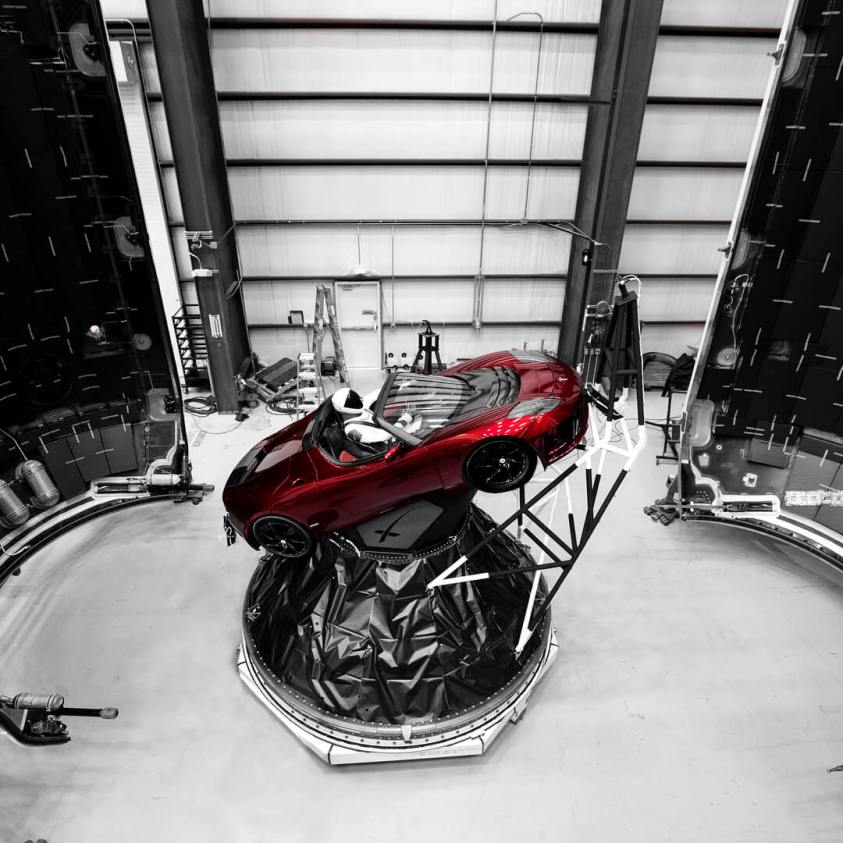In case you missed it, on Tuesday, February 6, 2018, SpaceX launched the Falcon Heavy rocket to deliver a test payload of Elon Musk’s Tesla Roadster into heliocentric orbit AND successfully returned the booster rockets for a perfect landing. The first stage generated more than 5 million pounds of thrust at liftoff. The goal is to show that the rockets could be sent to Mars.
Space.com has some incredible photos and you can watch video of the entire event from lift off to the return of the boosters. The return of the boosters alone is an engineering feat beyond compare!
As part of the test launch, the rocket needed to deliver a test payload into orbit. Elon Musk, founder of SpaceX, volunteered his very own Tesla Roadster (his own invention). The car is rotating as it moves away from the Earth and around the Sun. You can watch the 4 hour feed of the empty space suit sitting in the car.
Here’s what the roadster looks like attached to the 2nd stage.

The test launch was a success and everyone is happy.
Enter the astronomers…
UNC grad student Erik Dennihy turned the 4.1-meter Southern Astrophysical Research (SOAR) telescope at the car and followed it through space to see what it looks likes tumbling through space. Since we know the exact dimensions of the car, the data collected can help predict the size and shape of asteroids.
The car is moving away from the earth at about 12,908 km/h (8,021 mph). You can see a simulation of the orbit here (type roadster in the search box).
You can see the brightness of the car dim and brighten as it moves across the screen. This is due to the spinning motion of the car. A graph of the brightness can be used to determine how fast the car is spinning:
Early this morning we measured the brightness changes of a car tumbling in space! Credit to Erik Dennihy (@UNC), we can report that Tesla Roadster (Starman, 2018-017A) is rotating with a period of 4.7589 +/- 0.0060 minutes. pic.twitter.com/LA4YzdvjK9
— JJ Hermes (@jotajotahermes) February 11, 2018
There is some debate over the meaning of the graph since the car has 2 long sides that will both appear brighter when they reflect more of the sun’s light than the 2 short sides. You can download the raw data yourself (.dat file or .xlsx file) and see what conclusions you come up with! Compare this to the live feed of the spaceman in the car (above and here). How long between each view of the earth? Does this match the pattern of brightness flux?
More advanced investigations can explore the Akari Asteroid Flux Catalog to identify asteroids with similar light signatures. Akari (Japanese for light) was a satellite used to collect infrared light data from all areas of the sky.


